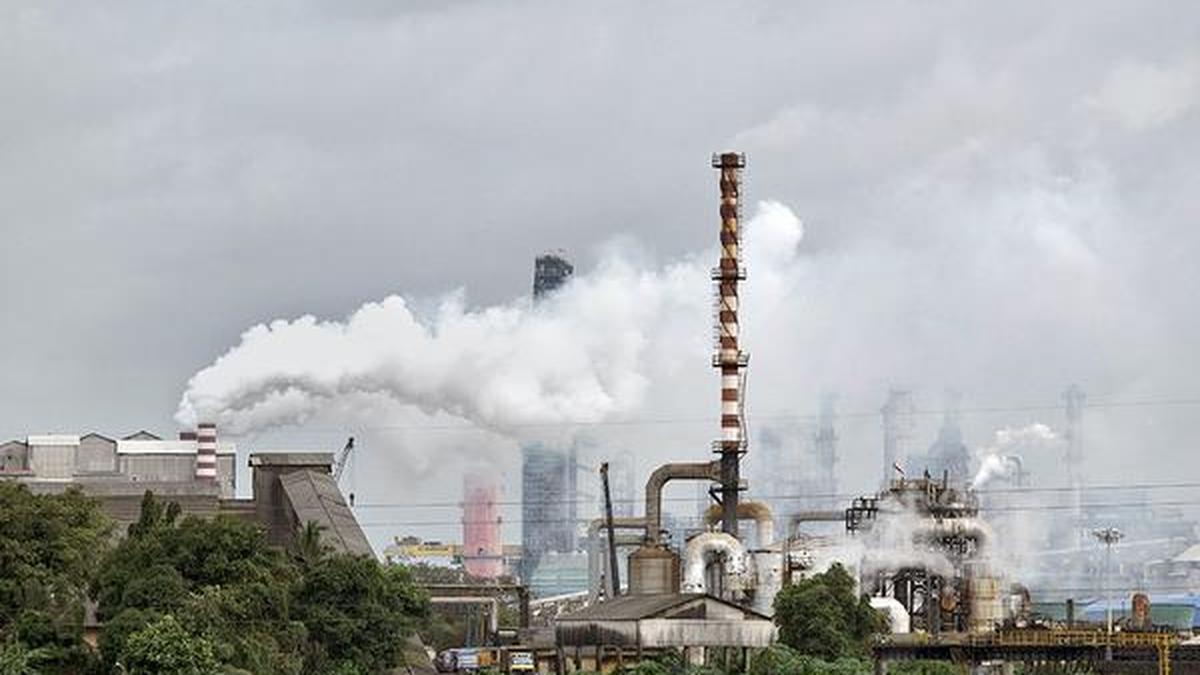India will submit its updated Nationally Determined Contributions (NDCs) in Brazil on November 10, likely with an increased target for energy efficiency improvement, sources in the Environment Ministry indicated to The Hindu.
| Photo Credit: AP
India will submit its updated Nationally Determined Contributions (NDCs) around the commencement of U.N. Climate Change Conference COP 30 in Brazil on November 10, likely with an increased target for energy efficiency improvement, sources in the Environment Ministry indicated to The Hindu.
The NDCs are renewable-energy adoption goals set by a country as part of being a signatory to the Paris Agreement – under which countries must regulate their fossil fuel consumption to keep the globe from heating 2°C, and as far as possible, 1.5°C above that in pre-industrial times.

As part of this, countries are required to update their NDCs every five years. India last updated its NDCs in 2022, when it committed to reduce the emissions intensity of its GDP by 45% of 2005 levels; source half of its electric power capacity from non-fossil fuel sources and, create a carbon sink of at least two billion tonnes — all three by 2030.
Emissions intensity of GDP refers to the amount of carbon emitted per unit of GDP and does not mean a reduction in net emissions. As of December 2023, India reported to the United Nations climate-governing body that the emissions intensity of its GDP had been reduced by 33% between 2005 and 2019. This June, India reported installing at least 50% of its power capacity from non-fossil fuel sources.
Targets for 2035
The updated NDCs, or NDC 3.0 as they are called, is expected to reflect the degree of emissions reductions by 2035. So far, only 30 of the 190-odd countries have submitted their NDCs though it is not uncommon for countries to submit their NDCs just ahead of the annual climate talks.
The NDCs are of particular significance this year because the Brazil presidency, which assumes the COP presidency in Belém, has stressed that a major effort this year would be to assess what hindered countries from achieving their stated NDCs. All commitments by countries, even if achieved to a tee, cannot stop the globe from heating to an average of 3°C by the century – well short of the Paris Agreement goals.
Overall, the ambition to undertake significant emission cuts seems muted. The European Union, the traditional leaders on climate action, have yet to announce a 2035 target though they have a long-term goal to be ‘net zero’ by 2050. The EU commission this July had proposed an amendment to the EU climate law enabling a 90% cut in emissions compared to 1990 by 2040. Though they were to vote on a target for 2035 last week, France and Germany weighed in to postpone a vote on the matter.
Synthesis report
The EU is expected to submit its NDCs ahead of COP30 with an indicative 2035 target in a range from 66.25% and 72.5% reduction, compared to 1990 levels. Australia this month updated its NDCs to say that it “aimed” to cut emissions 62%-70% of 2005 levels by 2035. The United States has exited the Paris Agreement and it remains to be seen if China will announce ambitious NDCs ahead of COP 30.
The numbers that have been made public so far will feed into a UN ‘synthesis report’ expected next month that will add up these numbers to compute how far off the globe is from the Paris Agreement targets. Major reductions, sources in the Environment Ministry suggest, would likely result from bilateral agreements between countries where developed and developing countries jointly invested in clean energy projects and shared the resulting cut in emissions, as computed by an approved methodology, as carbon credits.
India has recently signed such an agreement called a JCM (Joint Crediting Mechanism) with Japan and is in talks with other countries. However it will be a few years before such projects practically kick in. “Developed countries are not willing to part with the necessary finance to make good on ambitious goals and developing countries require fossil fuels for their development,” an Environment Ministry official added.
India is also expected to operationalise the India Carbon Market by 2026 — under which 13 major sectors will be given mandatory emission-intensity targets — and can trade their resulting savings, if any, via emission reduction certificates.
Published – September 23, 2025 09:51 pm IST
